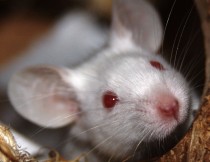Oxytocin mediated rescue of social behavior in mice

Read other items from "MindSpec presents Society for Neuroscience 2012"
The Cntnap2 gene is associated with Cortical Dysplasia Focal Epilepsy (CFDE) syndrome, which is characterized by seizures, hyperactivity, and autism. A knock out mouse model of Cntnap2 displaying social and communication deficits was recently reported. Researchers presented data at the Society for Neuroscience meeting about performing an in vivo screen for drugs that rescue the social deficits in this mouse model.
The researchers reported two drugs, oxytocin and vasopressin, that showed positive effects on social behavior. This effect was confirmed using two tests for sociability in mice - direct social interaction and three-chambered social interaction test. Oxytocin is a hormone that has been shown to have a role in social recognition and bonding.
The researchers then investigated the mechanism through which these drugs might be providing the pro-social effects by performing receptor blocking of the drugs. This revealed that both drugs were working through the oxytocin system. These findings were validated with the levels of oxytocin being decreased in the knock-out models.
These are still preliminary results, but highlight validity of these models for identifying therapeutic options. Deeper characterization of the mechanism of oxytocin action along with behavior classification is needed to further analyze the effectiveness of this therapy.

